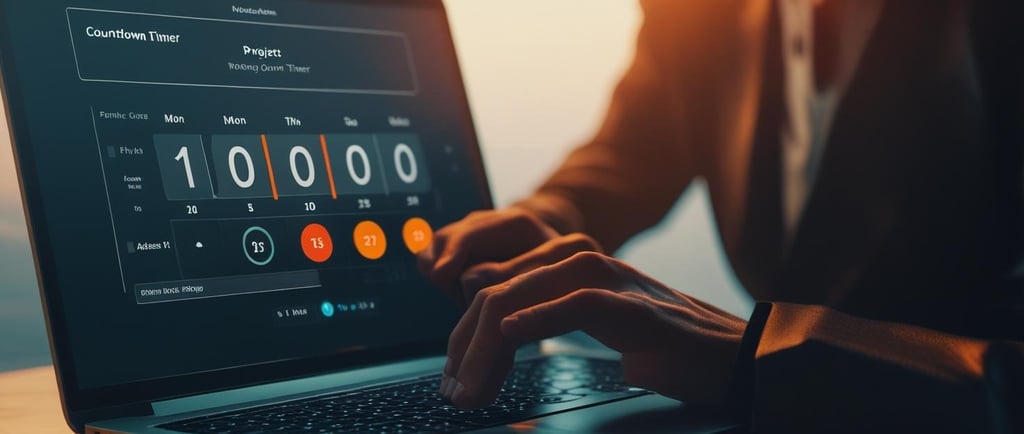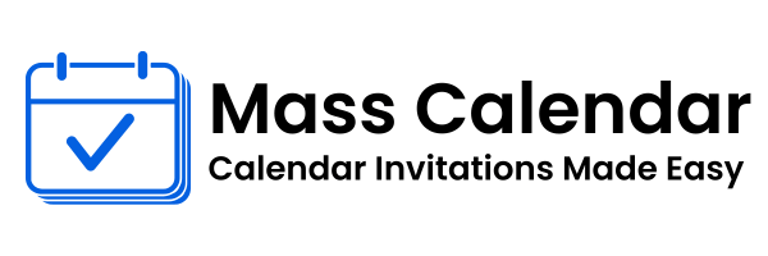How to Avoid Session Overruns with a Countdown Timer
Every event professional knows the chaos that unfolds when a session runs longer than scheduled. Whether you're organizing a high-stakes conference, a training workshop, or a virtual town hall, timing is everything. Overrunning one session can cascade into delays for everything that follows, affecting both logistics and audience satisfaction.
BLOG
6/13/20253 min read


Every event professional knows the chaos that unfolds when a session runs longer than scheduled. Whether you're organizing a high-stakes conference, a training workshop, or a virtual town hall, timing is everything. Overrunning one session can cascade into delays for everything that follows, affecting both logistics and audience satisfaction.
One of the simplest and most reliable ways to prevent this issue is by using a countdown timer for sessions. These timers act as silent managers on the stage, helping speakers stay within limits and ensuring the entire program remains on track.
The Impact of Session Overruns
Session overruns don’t just affect the clock — they affect the entire event experience:
Speaker overlap causes confusion and delays.
Audience frustration increases when schedules are not honored.
Tech teams face last-minute adjustments and stress.
Exhibitors and sponsors lose visibility if things run late.
Especially at large events, even a 10-minute overrun can ripple through the day and disrupt everything from coffee breaks to keynote slots.
Why Use Countdown Timers?
A session countdown timer is a simple digital or physical display that counts down the allocated time for a session, presentation, or activity. Here’s why it works:
Keeps speakers focused
A visible countdown timer for speakers serves as a constant reminder to pace themselves and finish on time.Improves stage management
Whether you’re running a single-track conference or a multi-session event, a stage timer for conference helps everyone stay in sync.Supports smooth transitions
From opening remarks to breakout rooms, countdown timers ensure everyone knows when it's time to move.Reinforces professionalism
Well-timed events reflect better on organizers and improve the attendee experience.
When and Where to Use Timers
You can integrate countdown timer for events across many parts of your agenda:
Opening countdown to energize attendees
Presentation time control for speakers
Panel discussion timing
Break reminders and lunch transitions
Closing countdown to wrap up effectively
The right timer for presentation can enhance everything from TED-style talks to educational workshops.
Countdown Timers for In-Person and Virtual Events
The growing shift to hybrid and remote events means timing tools are more important than ever. In virtual formats, participants are even less tolerant of overruns. When used properly, a stage timer for events can:
Reduce drop-offs during webinars
Keep livestreams punctual
Help multiple speakers maintain flow during online panels
Signal back-end production teams for scene switches
Digital platforms now often integrate these timers, ensuring remote and on-stage speakers are aligned on timing.
Best Practices for Using Countdown Timers
To maximize impact, follow these event-tested strategies:
Place Timers Where Speakers Can See Them
Don’t hide the clock backstage. Timers need to be front and center.
Use Colors and Alerts
Switch from green (safe) to yellow (warning) to red (wrap-up) — universally understood signals.
Rehearse with the Timer
Give every speaker a run-through with the countdown system to eliminate surprises.
Designate a Timekeeper
One staff member should oversee time compliance and help alert moderators if a session is slipping.
Integrate Timers Into Event Flow
Use the timer as a visual storytelling element, such as during lightning talks or pitch battles.
Managing Panel Discussions and Q&As
A dedicated countdown timer for speakers is essential in open-format sessions. Moderators often lose track of time while managing multiple voices. Set a timer for:
Each panelist’s initial response
Follow-up rounds
Audience Q&A windows
This ensures fairness and avoids the dreaded “sorry, we’re out of time” without any value being delivered.
Common Mistakes to Avoid
Relying on speaker self-monitoring: Most speakers underestimate how long they’ve spoken.
Timers not visible enough: A timer behind the stage won’t help a presenter.
Ignoring rehearsal timing: Sessions almost always take longer in real life than in practice.
No fallback plan: Always have a manual timer or alert system in case of tech failures.
Final Thoughts
Time management is an art and science — and when applied with the help of a session countdown timer, it turns a chaotic event into a finely tuned experience.
The countdown timer for events is more than a clock; it’s a subtle signal of structure, respect, and readiness. Whether you're managing a conference stage, a product launch, or an internal town hall, investing in structured timing will always pay off — for you, your speakers, and your attendees.
MassCalendar.in
Send Bulk & Mass Calendar Invites Instantly
CONTACT
Meetings
+44 (0) 203 916 5117
© 2025. All rights reserved.
Help?
